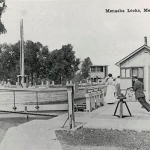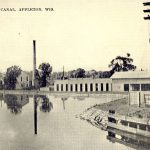Bills to Inject $4 Billion in New Water Infrastructure Funding, Start Confronting Environmental Injustices
Two major bills that boost water infrastructure investment were unanimously reported out of the Senate Environment and Public Works Committee yesterday, a major step forward in ensuring that all communities have access to clean and safe drinking water, as well as healthy ecosystems, the Healing Our Waters – Great Lakes Coalition said. The bipartisan America’s Wastewater Infrastructure Act of 2020 and Drinking Water Infrastructure Act of 2020 provide more than $4 billion in new funding for water infrastructure and almost $1 billion targeted at helping low-income, rural and tribal communities.
“This is a great start toward addressing some of the issues that have unfortunately prevented many in the Great Lakes region from accessing the basic need of clean drinking water,” said Laura Rubin, Director of the Healing Our Waters – Great Lakes Coalition. “The nation is facing a water infrastructure crisis. Communities are facing unsafe water from toxic pollutants like lead and PFAS, while seeing their water rates skyrocket. These federal investments are urgently needed to help provide clean and affordable drinking water to everyone – especially those people in communities which have historically borne the brunt of pollution and injustice. We urge the Senate to pass these bills now, because the longer we wait, the more costly and difficult these projects become.”
The Healing Our Waters-Great Lakes Coalition delivered a letter to Congress, which over 65 organizations signed, supporting key provisions in the bills such as:
- Increasing the authorization for the Clean Water State Revolving Fund to $2 billion and incrementally up to $3 billion, to help communities fix, repair, and update wastewater systems.
- Providing $2.5 billion in additional funding to help communities fix, repair and update drinking water infrastructure.
- Ensuring that a minimum of 10 percent of federal funding through the clean water SRF and 14 percent of federal funding through the drinking water SRF are provided as grants or no-interest loans to help resolve water affordability problems in communities across the country.
- Tripling of grants, from $100 million to $300 million, to remediate toxic PFAS contamination, tackling a persistent threat to drinking water.
- Investing almost $1 billion in new water infrastructure investment in low-income, rural and tribal communities.
- Supporting lead-reduction projects in schools and communities.
- Increasing the Great Lakes Restoration Initiative authorization from $300 million to $375 million.
The bills now head to the full Senate for consideration.
The Healing Our Waters-Great Lakes Coalition has urged the U.S. Congress to boost water infrastructure for the last several years, as water affordability and poor quality continues to plague communities across the region. Great Lakes cities such as Chicago, Cleveland and Detroit have seen water rates increase dramatically over the last ten years, in large part due to inadequate federal investment.
The U.S. EPA estimates that the Great Lakes states of Illinois, Indiana, Michigan, Minnesota, Ohio, New York, Pennsylvania, and Wisconsin need more than $179 billion over the next 20 years to fix, update, and maintain their wastewater and drinking water infrastructure.
According to a Michigan State University report, if water rates continue to rise as they have, more than 35 percent of people in the United states will struggle to afford their water bills by 2022.
The post Bills to Inject $4 Billion in New Water Infrastructure Funding, Start Confronting Environmental Injustices appeared first on Healing Our Waters Coalition.
Healing Our Waters Coalition
https://healthylakes.org/bills-to-inject-4-billion-in-new-water-infrastructure-funding-start-confronting-environmental-injustices-2/





















